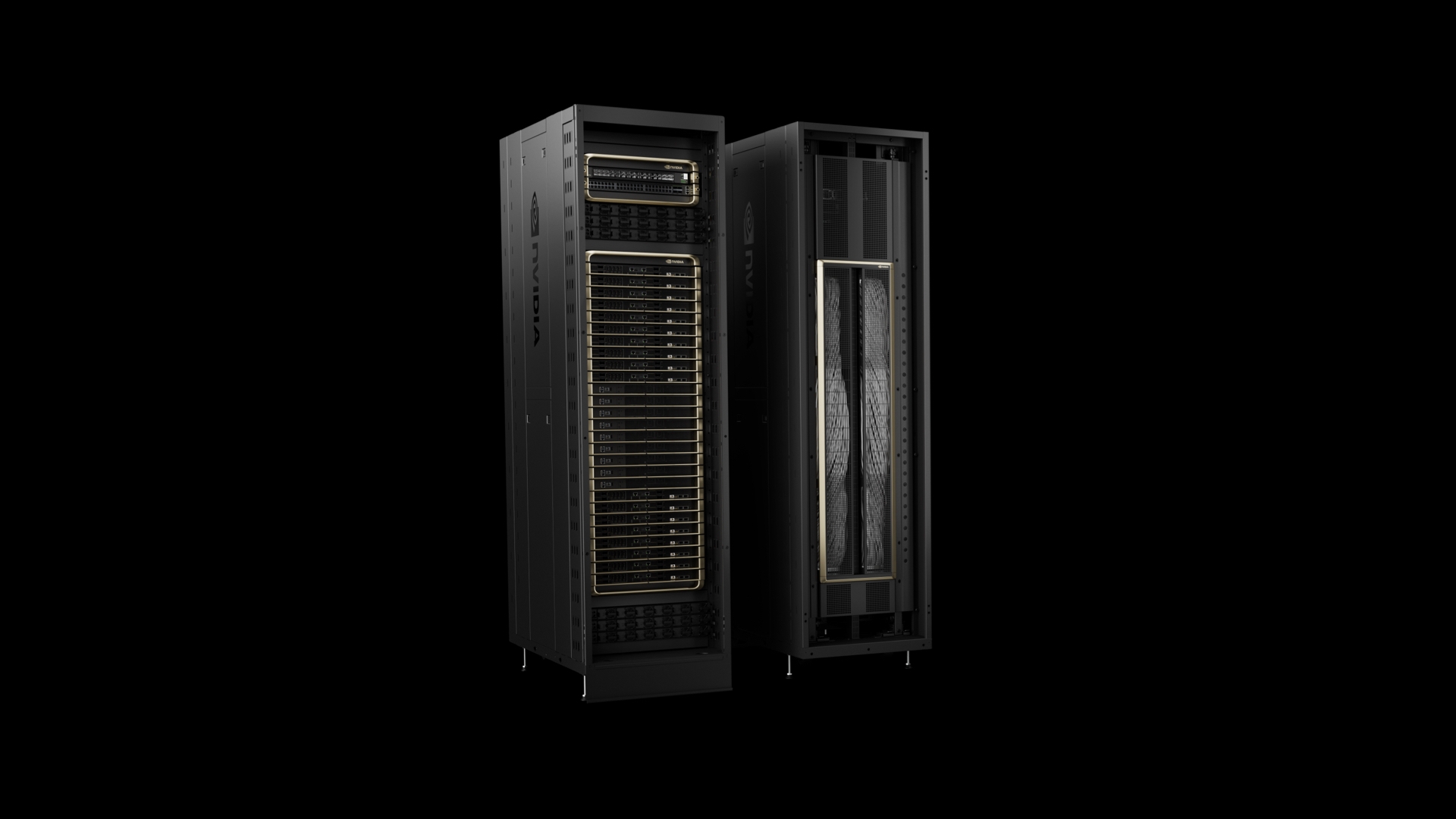GTC 2024 has started with a blast and NVIDIA has unveiled its next generation of AI accelerators, the B200 and GB200 GPUs, built on the groundbreaking Blackwell architecture.
These processors represent a huge step in AI computing, designed to tackle the ever-growing complexity of modern workloads.
The B200 boasts a monolithic design with a record-breaking transistor count, while the GB200 takes a multi-chip approach, combining the power of multiple B200s with a Grace CPU for unparalleled performance.
Together, these GPUs offer a dramatic increase in processing power and memory capacity, paving the way for advancements in numerous fields that rely heavily on artificial intelligence.

The monolithic marvel NVIDIA B200
The NVIDIA B200 is an engineering masterpiece, boasting a staggering 208 billion transistors. This remarkable feat is made possible by its chiplet design, where two massive dies are seamlessly integrated.
The B200 is a computational powerhouse, offering a threefold increase in FP64 high-precision compute performance compared to its Hopper-based predecessor.
Perhaps most striking is the B200’s capacity for AI inferencing tasks.
NVIDIA claims this GPU delivers a staggering fivefold improvement over the H200. This leap in performance is significant for deploying large language models (LLMs) and other AI applications that rely heavily on inference.
For tech moguls out there, here is every single technical detail of Nvidia B200:
| Specification | Details |
| Architecture | Blackwell |
| Fabrication process | TSMC N4P (custom 4nm-class) |
| Transistor count | 208 billion (across two chiplets) |
| Memory type | HBM3E |
| Memory capacity | 192 GB (8 x 24 GB stacks) |
| Memory bandwidth | 8 TB/s |
| NVLink interface | 1.8 TB/s |
| FP64 compute performance | 3x improvement over H100 |
| AI inference performance | 5x improvement over H100 |
GB200 combines Grace and Blackwell architectures
The GB200 takes the concept of a ‘superchip’ further by joining the power of two B200 GPUs with a Grace CPU via an ultra-low-power NVLink chip-to-chip interconnect.
This configuration delivers even more impressive performance and memory capacity tailored for the most demanding AI workloads.
The GB200 features include:
- Immense memory capacity: Designed to handle the memory demands of a trillion-parameter AI model
- High-speed networking: Support for NVIDIA Quantum-X800 InfiniBand and Spectrum-X800 Ethernet platforms with ultra-fast 800Gb/s speeds
- Multi-node scalability: The GB200 forms the foundation of the NVIDIA GB200 NVL72, a liquid-cooled, rack-scale system for the highest levels of computational intensity
Here is a quick rundown of GB200’s specs:
| Specification | Details |
| Architecture | Blackwell |
| Components | 2x B200 GPUs + NVIDIA Grace CPU |
| Interconnect | 900 GB/s ultra-low-power NVLink (chip-to-chip) |
| Memory capacity | 384 GB HBM3E |
| Total memory bandwidth | 16 TB/s |
| Networking support | NVIDIA Quantum-X800 InfiniBand (800 Gb/s), Spectrum-X800 Ethernet (800 Gb/s) |
| System configuration | GB200 NVL72 (liquid-cooled, rack-scale) |
The potential impact of the B200 and GB200 extends across numerous industries and applications.
Their powerful acceleration is ideal for training and deploying the massive generative AI models changing how we create art, text, code, and more.
The B200/GB200 power enhanced services in areas like natural language processing and recommendation systems. Researchers will also get precision and speed for fields like drug discovery, climate modeling, and materials science.

Blackwell at scale
NVIDIA has simultaneously announced the DGX SuperPOD, purpose-built to leverage the power of GB200 Grace Blackwell Superchips. This turnkey solution offers an optimized platform for scaling generative AI workloads with industry-leading reliability.
The future of AI acceleration
The NVIDIA B200 and GB200 represent a major advancement in AI computing and mark a new high-water mark in powerful acceleration solutions.
These landmark GPUs, with their performance and memory advantages, are poised to drive innovation and push the frontiers of what’s possible across numerous sectors.
Featured image credit: pvproductions/Freepik.





